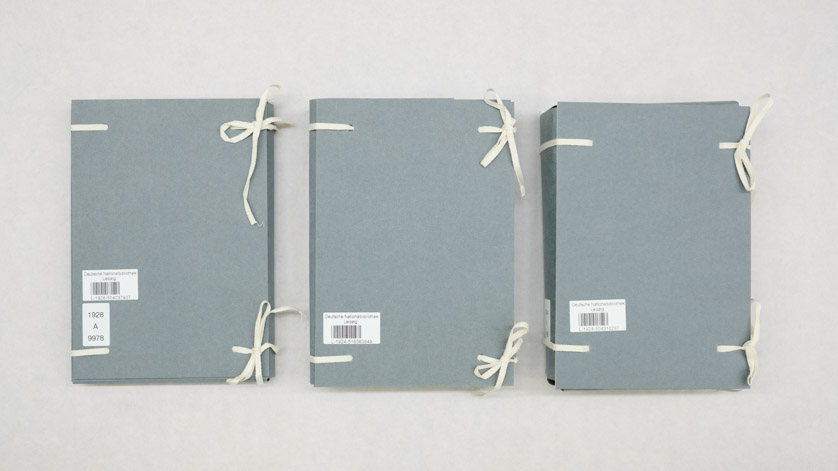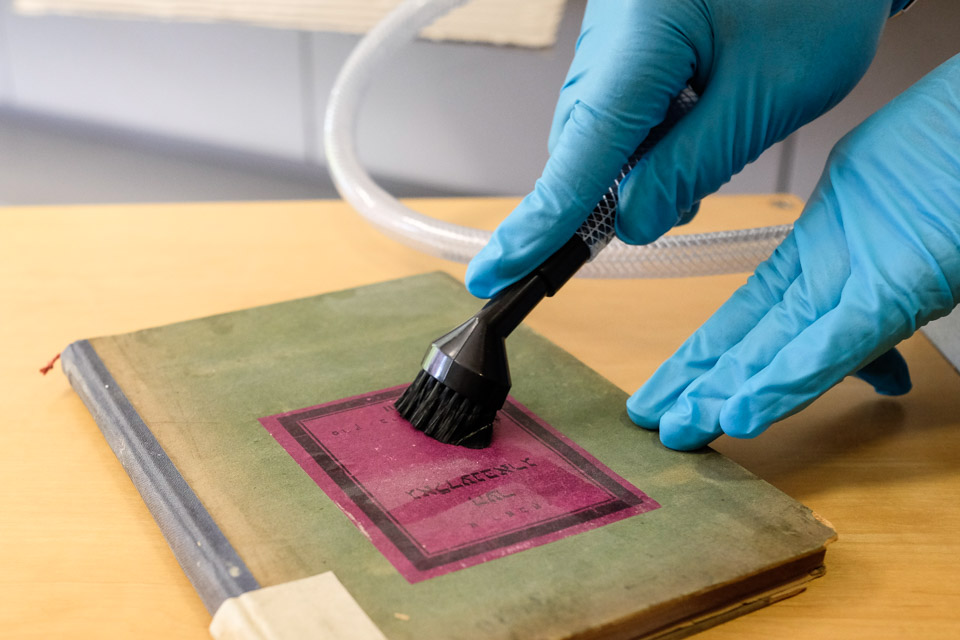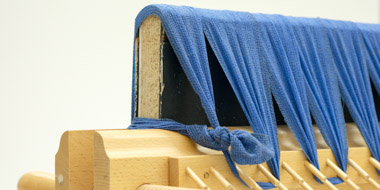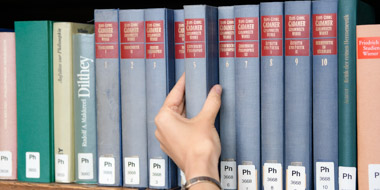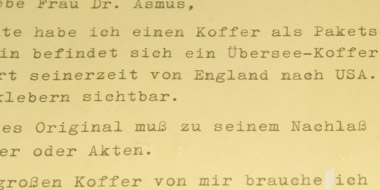We wish to retain an overview of the state of preservation of our collections at all times, so that we can effectively plan our collection preservation measures. If, for example, we are planning packaging and cleaning measures, it is important that we know how many of the media that are dirty are on which carrier material, and to what extent.
For this purpose, we use a regular monitoring procedure to record the state of all physical objects in our collection. Acute damages, such as insect infestations, are thus identified in good time. For this purpose, specially trained staff record the state of all holding groups in all stacks. We document the data thereby obtained in the “Bonpland” application. This app custom-developed for the German National Library enables us to record and evaluate the state of our collections in a statistically valid way.
The German National Library’s collection is under threat from one source of damage in particular, namely the accelerated ageing of cellulose, the basic component of paper, under the influence of acid. The papers from the period between around 1850 to 1990 are affected by this phenomenon to varying degrees, depending on the manufacturing process involved. Damages such as brittleness and yellowing therefore occur to varying degrees of intensity.
For this reason, we have been outsourcing the de-acidification of our collections since 1994. Using a so-called mass de-acidification process, the acid in the paper is neutralised and an alkaline reserve introduced. In this way, several tons of library holdings are de-acidified by a contractor every year, in combination with internal quality controls.
In the “Sustainability of mass de-acidification of library holdings” project, we evaluated the sustainability of mass de-acidification via scientific analyses. The project was based around the holdings of the German National Library in Leipzig and the Berlin State Library – Prussian Cultural Heritage, which were de-acidified between 1994 and 2006 and between 1998 and 2006. The chemical analyses were performed by the Department of Chemistry at the University of Natural Resources and Life Sciences, Vienna. Alongside the pH-value and alkaline reserve, an artificial ageing process was used to examine the long-term behaviour of the de-acidified papers. This yielded the important insight that the effect of de-acidification is all the more effective the less damaged the paper is at the start of the treatment. In a best-case scenario, the paper’s degradation can be slowed down by a factor of three using de-acidification – however, it cannot be be stopped entirely.
Further Information
The targeted packaging of media represents an important preventive measure. Archive-appropriate packaging protects against dust, mechanical damage and other external influences. Every year, around 50,000 media are newly packaged – this is equivalent to around two kilometres of shelf space.
We regularly and systematically clean non-packaged media with museum-grade vacuum cleaners. These are equipped with special filters, precision-defined suction power and appropriate cleaning attachments and brushes to prevent any damage to the media. In this way, we clean the dust from at least five kilometres of shelf space each year.
Measures for digitising print media are supervised from a conservation standpoint – before beginning work, we assess whether the printed media in question are suitable for digitisation and document their current state. The selected works are then prepared for digitisation and, once the digital copy has been created, re-assessed for any damage as part of the quality management process.
We predominantly digitise media whose paper is so badly damaged that conservation or restoration measures are no longer possible. After being digitised, the originals are optimally packaged and stored but no longer available on loan for users, owing to their poor state of preservation. The digitised work created from the so called “mummified” printed work secures the original’s content and enables its continued use as a digital copy.
Exhibitions are supervised from a conservation standpoint during the planning phase in particular, but also throughout the period of the actual exhibition. The objects are checked in advance for any potential existing damage and to assess if they are suitable to be exhibited. You can find out more on the topic of exhibitions in our preservation policy (version 1.0, last updated: 1 August 2018).
Should an emergency such as water damage occur, quick action is required to professionally salvage, clean and preserve the materials. The German National Library has a dedicated emergency management process in place for such events. There is a working group for emergency planning at both sites. Their tasks include the creation and ongoing updating of emergency plans, as well as continuous monitoring of the emergency boxes.
The German National Library is an active participant in the “Emergency Association of Leipzig-based Archives and Libraries”, which was founded on 21 May 2012 and since then promotes regular dialogue between the participating institutes.
